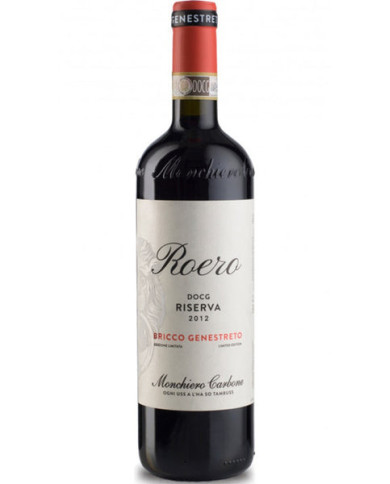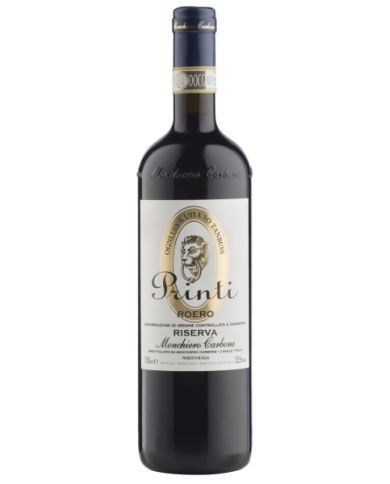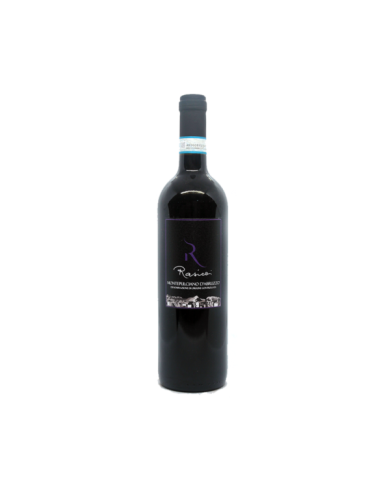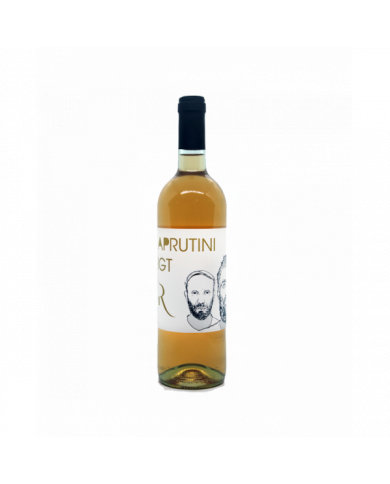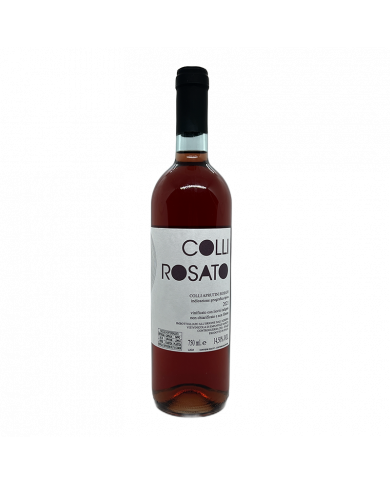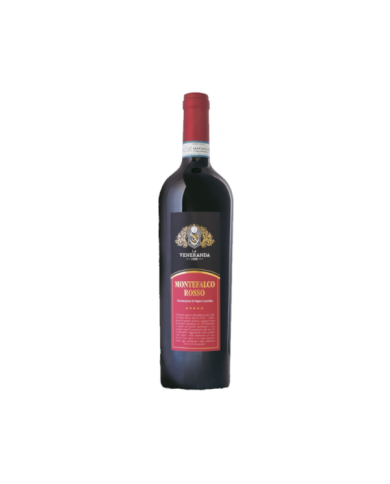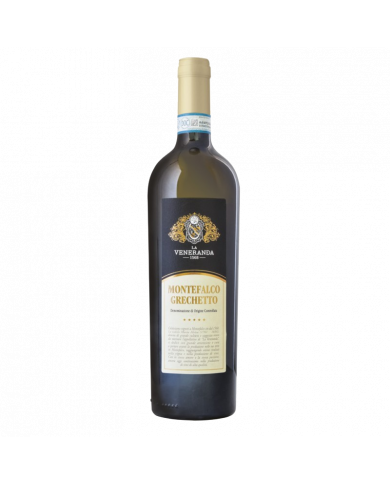SKU: 15550
Brand: Monchiero Carbone
Bricco Genestreto is a wine of great intensity and potential born from Francesco Monchiero's desire to express all his ability and passion in a Nebbiolo that was "powerful". After bottling, before being tasted and marketed, this wine is kept in the cellar for 8 years.The first vintage is of only 588 bottles, all numbered, an amazing limited edition to try.A wine that wears a brilliant garnet red color to the glass. It seduces the sense of smell with its intent and ample pleasant bouquet punctuated by fruity hints of plum that blend sinuously with balsamic nuances of dried flowers, licorice and sweet tobacco.It enters the mouth demonstrating from the first sip an enveloping, harmonious, full and velvety taste. It conquers the palate with its intense balsamic notes and long persistence.It expresses its maximum potential in combination with dishes based on meat, game, roasts rich in aromas and intense flavors, ribs or long-aged cheeses.
SKU: 15549
Brand: Monchiero Carbone
The Roero Riserva "Printi" is one of the precious pieces of the Monchiero Carbone winery, produced starting from the exceptional harvest of 1997 and which, year after year, has been able to establish itself on the Piedmontese wine scene proving to be able to compare itself with the other more structured wines of the region , without however having to give up the typical elegance of the Nebbiolo grapes grown on the rugged hills of the Roero. The Nebbiolo grapes from which Printi is born are grown at an altitude of 350 meters on the Frailin hill, on very calcareous soils; the fermentation is always long and slow to ensure that the wine is enriched with all the natural components contained in the grape and for the refinement, which lasts at least 24 months, small woods of different passages are used. The result can only be a wine with a great aromatic, balanced baggage, to be chosen for weekend conviviality and which will certainly not disappoint expectations. It opens to the eye with a beautiful ruby red hue, intense and brilliant. After an initial ethereal attack, the nose develops a fruity bouquet with hints of raspberries and wild strawberries, followed by spicy notes of vanilla, cinnamon, tobacco and noble woods. The taste is full-bodied and endowed with pleasant softness, with good fruit in the right balance with acidity and a texture of sweet and seraphic tannins, which gradually relax, giving a long and harmonious finish. Perfect to drink in combination with game, braised and overcooked meats, seasoned or lightly blue cheeses.
Denomination of Roero
The Denominazione d'Origine Controllata (DOC) is a quality mark that guarantees the authenticity and typicality of Italian products, highlighting the distinctive characteristics of their region of origin. The Roero denomination, located in the Piedmont region, is famous for producing prestigious wines that reflect the uniqueness of its terroir and the work of its winemakers.
History of the Roero Denomination and its Connection with the Territory
The history of the Roero denomination is rooted in the ancient winemaking tradition of Piedmont. The earliest evidence of vine cultivation in the region dates back to the Roman era, but it's over the centuries that viticulture has assumed an increasingly important role in the local economy and culture. The Roero denomination, with its limestone soils and continental climate, offers ideal conditions for the cultivation of native varieties such as Nebbiolo and Arneis, which give rise to wines of great complexity and personality.
Characteristics of Wines from the Roero Denomination
Terroir
The terroir of the Roero denomination is characterized by limestone and clay soils that impart a pronounced minerality and structure to the wines. The region's continental climate, with cold winters and hot summers, contributes to a slow ripening of the grapes, allowing them to develop complex aromas and lively acidity.
Grape Varieties Used
In the production of wines from the Roero denomination, mainly native grape varieties such as Nebbiolo for red wines and Arneis for white wines are used. These varieties have adapted perfectly to the Roero terroir, producing wines of great elegance and character, with distinctive notes of red fruits, flowers, and spices.
Production Method
The production process of wines from the Roero denomination involves manual harvesting of the grapes followed by gentle pressing and controlled fermentation. Red wines are then aged in oak barrels for a varying period, ranging from several months to several years, while white wines are often vinified and aged in steel to preserve the freshness and vivacity of their aromas.
The Denomination Process
The Roero denomination is subject to rigorous controls that guarantee the quality and authenticity of the wines. Analytical and organoleptic parameters are established to define the characteristics of the wine and ensure compliance with traditional agronomic practices.
How to Recognize and Appreciate Wines from the Roero Denomination
Wines from the Roero denomination stand out for their aromatic complexity, elegant structure, and balance. Red wines are characterized by soft tannins, ripe fruit, and spices, while white wines are fresh, floral, and mineral. Perfect to enjoy paired with dishes from Piedmontese cuisine such as tajarin with ragù, braised meat, and aged cheeses, enhancing their taste and aroma.
The Importance of the Denomination for Piedmont
The Roero denomination plays a fundamental role in the economic and cultural development of Piedmont, promoting the territory and its food and wine products nationally and internationally. It also contributes to preserving the ancient winemaking traditions of the region, ensuring the continuity and enhancement of the Piedmontese wine heritage.
Wines from the Roero Denomination in the Context of the Italian Wine Market
Wines from the Roero denomination are highly appreciated in the Italian and international wine market, thanks to their quality and typicality. They are sought after by consumers looking for authentic and characterful wines capable of telling the story and the territory they come from.
Winery Tours and Tastings
For those wishing to deepen their knowledge of wines from the Roero denomination, numerous wineries in the region offer guided tours and tastings. A unique opportunity to discover the secrets of local winemaking and savor the finest wines of the denomination.
Food and Wine Pairing Tips
Wines from the Roero denomination pair perfectly with dishes from Piedmontese cuisine such as tajarin with ragù, braised meat, and aged cheeses. Their complexity and structure also make them ideal to be enjoyed on their own, as meditation wines.
Roero: A Winemaking Excellence of Piedmont
In conclusion, wines from the Roero denomination represent a winemaking excellence of Piedmont, capable of telling the story and the territory of Roero through their unique and unmistakable taste.
Frequently Asked Questions about the Roero Denomination
What grape varieties are used in the production of wines from the Roero denomination?
The main grape varieties used in the production of wines from the Roero denomination are Nebbiolo for red wines and Arneis for white wines.
What are the distinctive characteristics of wines from the Roero denomination?
Wines from the Roero denomination are distinguished by their aromatic complexity, elegant structure, and balance.
Where can I buy wines from the Roero denomination?
Wines from the Roero denomination are available at specialized wine shops, supermarkets, and online through producers' websites.
What is the production method of wines from the Roero denomination?
The production process of wines from the Roero denomination involves manual harvesting of the grapes followed by gentle pressing and controlled fermentation. The wines are then aged in oak barrels for reds and in steel for whites.
What is the origin of the Roero denomination?
The Roero denomination takes its name from the Roero area, located in the Piedmont region, famous for vine cultivation and the production of high-quality wines.

